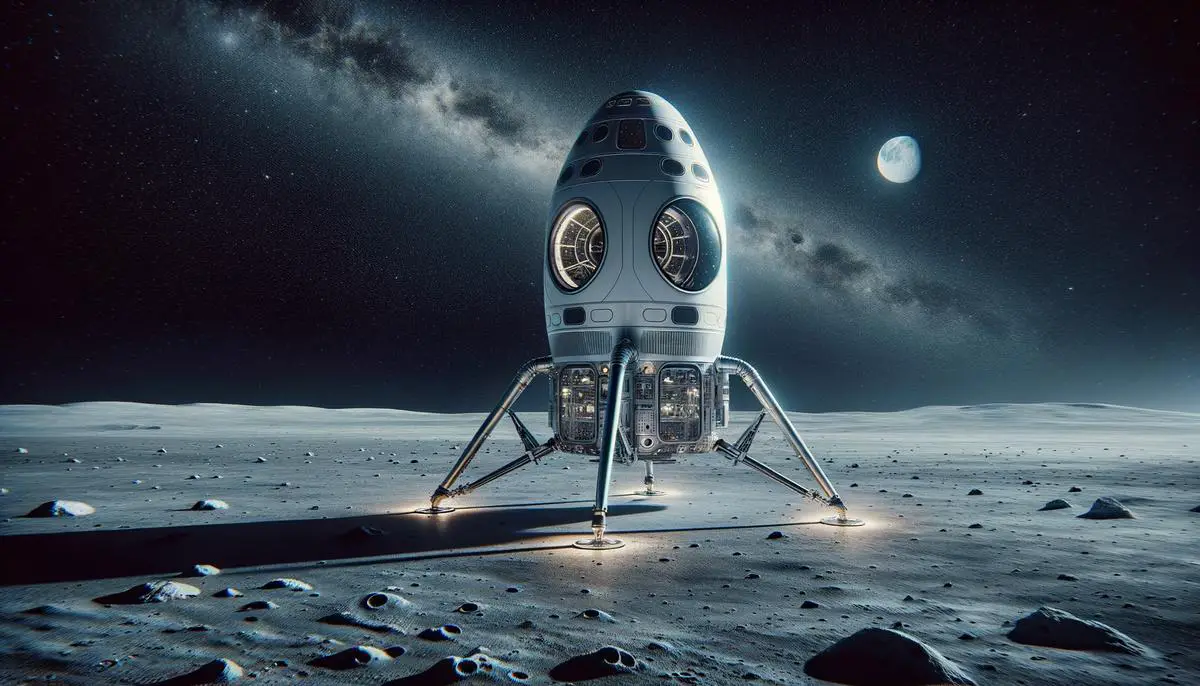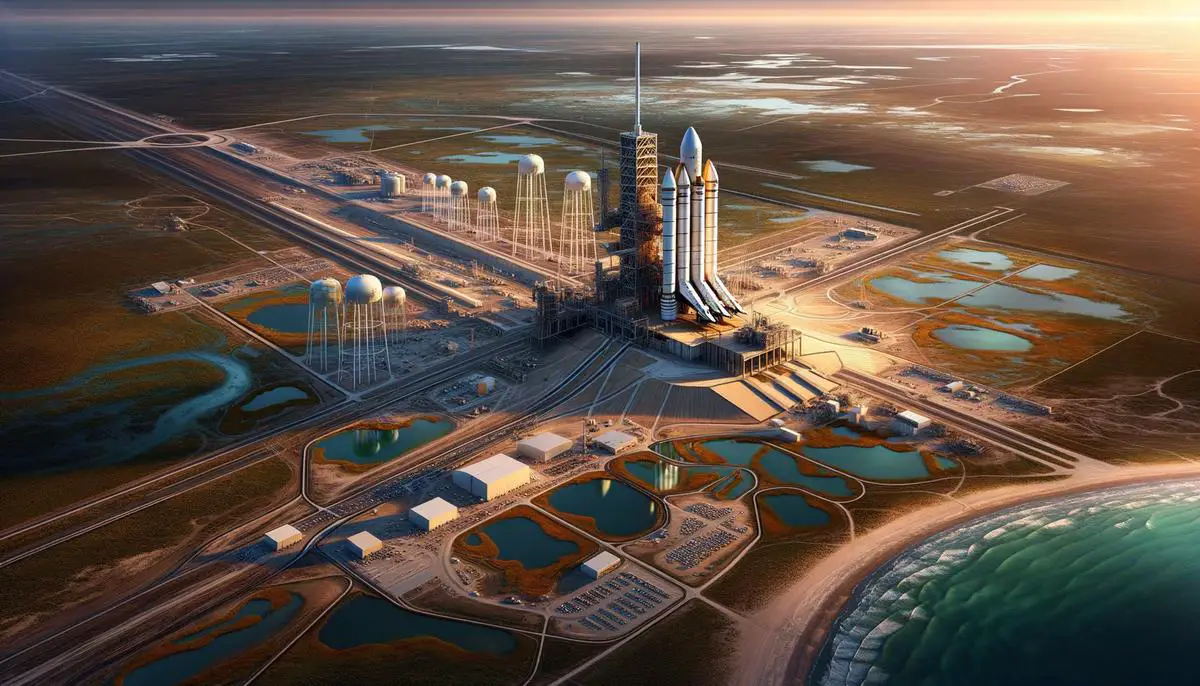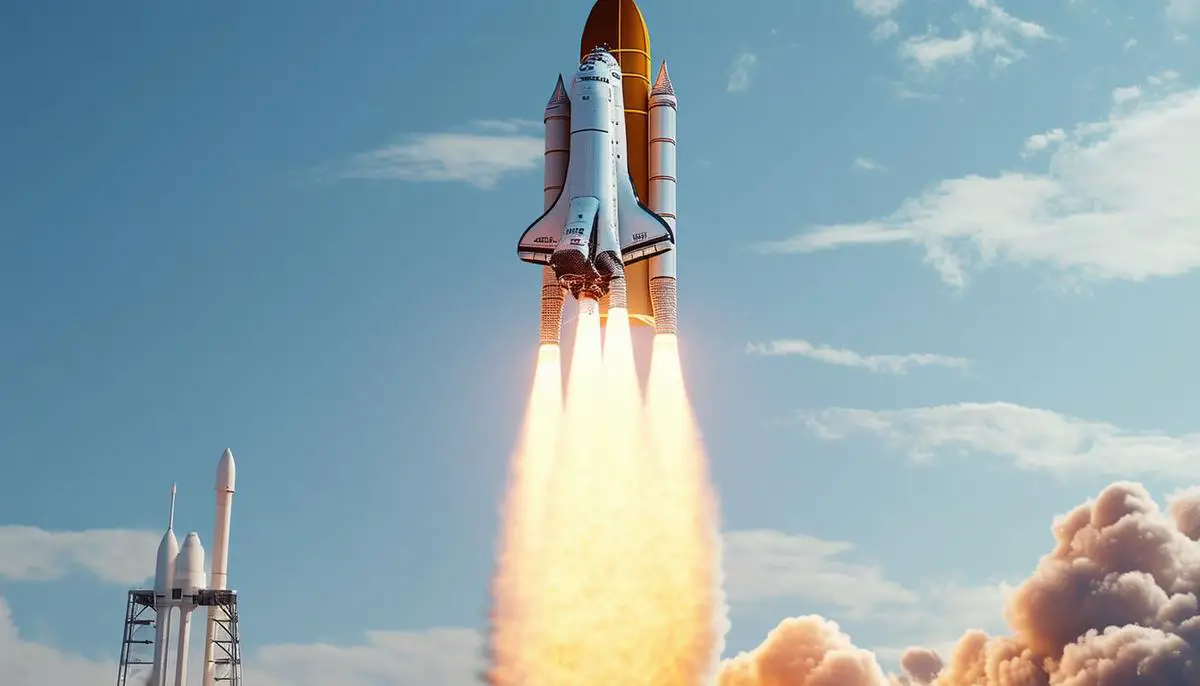Overview of Starship Test Flight 4
The fourth test flight of SpaceX's Starship aimed to bring the Super Heavy booster safely back down for a soft splashdown and tackle a controlled reentry of the Starship upper stage. The Super Heavy booster ascended successfully, performing a full-duration burn. It ignited its Raptor engines for separation, flipping and performing a boost back burn toward the Gulf of Mexico.
Starship, the upper stage, showcased control during reentry. However, during its descent through the atmosphere, one of the flaps encountered significant burn damage. Despite this, the Starship managed a controlled splashdown in the Indian Ocean.
The flip maneuver and soft splashdown of the Super Heavy booster were standout moments. The flight proved the potential of the design, offering critical data for improvements.
On several occasions, the Raptor engines fired as planned, though at one point, one of them didn't ignite. Yet, the flight proceeded, with measurements gathered throughout the journey. As both the booster and Starship made their way back, engineers monitored crucial data streams, including the entry phases under extreme conditions.
Flight 4 underscored areas needing refinement, particularly related to forward flaps and heat shield tiles. Elon Musk highlighted these issues, reassuring that the next iteration will address them. Attention is shifting to future flights, with plans to utilize Mechazilla arms for catching the booster.
SpaceX continues to push boundaries, with each test flight offering valuable lessons. The successful aspects of Flight 4 provided encouragement that reusable space vehicles are within reach. As both stages splashed down, SpaceX inched closer to their dream of making Starship a reliable vehicle for missions to Earth orbit, the Moon, and Mars.
Technical Challenges and Solutions
The fourth flight of Starship faced some technical hurdles, shedding light on areas requiring thorough engineering improvements. One of the most notable challenges was the burn-through damage observed on one of Starship's flaps. This incident demonstrated the immense stress and heat resistance needed by such components during reentry at hypersonic speeds.
SpaceX CEO Elon Musk addressed these issues, explaining that this damage would lead to design alterations. The forward flaps will be shifted leeward, streamlining their manufacturing process and enhancing both reliability and payload capacity. These changes signify SpaceX's commitment to continuously evolve and rectify identified flaws, making each successive flight more reliable than its predecessor.
Furthermore, another significant issue during the flight was the loss of multiple heat shield tiles. SpaceX had strategically tested different configurations, including intentionally removing several tiles to gauge the thermal impact. The data collected offered vital insights into thermal protection systems.
In response to these findings, SpaceX has switched to a predominantly passive glass heat shield. This upgrade is expected to address the weight concerns associated with the previous actively-cooled steel shields without compromising on heat resistance. Musk affirmed that the newer heat shield would improve the spacecraft's integrity during the searing reentry phase, crucial for the success of future missions.
Additionally, the noteworthy challenges with the Raptor engines urged the engineering team to scrutinize engine performance under dynamic conditions. Though one engine failed to ignite during the mission, the flight metrics provided valuable information for refining engine reliability. These refinements aim to ensure that all engines can consistently perform their critical functions, especially during stage separations and landing burns.
Simultaneously, SpaceX's plans to employ the Mechazilla arms for catching the Super Heavy booster reflect the company's proactive approach to innovation. This mechanical catch system is designed to mitigate risks associated with splashdowns, aiming for precision and reduction in wear and tear on the booster.
These technical adjustments and innovative solutions mark SpaceX's relentless pursuit of perfection. The fourth flight of Starship unearthed essential data that will fuel future advancements, propelling the dream of reusable space vehicles further. Through careful engineering and constant iteration, SpaceX is closer than ever to transforming space missions into routine voyages.

Significance for Future Missions
The success and challenges faced during the fourth test flight of SpaceX's Starship hold profound significance for the company's future missions. The data collected from the flight provides invaluable insights that will inform and guide necessary improvements, directly shaping the development trajectory of Starship.
For future missions, particularly those under NASA's Artemis program, the Starship's performance during reentry and its ability to maneuver and control descent are crucial. The fourth flight's demonstration of controlled reentry, despite the damaged flap and loss of heat shield tiles, highlighted areas of vulnerability that SpaceX must address to ensure the safety and reliability of crewed missions.
The Artemis program serves as an instrumental stepping stone for broader space exploration goals. NASA's selection of the Starship as the crewed lunar lander underscores the vehicle's potential to meet the stringent requirements for human spaceflight. The modifications SpaceX plans to make, including shifts in flap design and upgrades to the heat shield, directly stem from the lessons learned in the fourth test flight. These refinements will enhance the structural integrity and operational capacity of the vehicle, ensuring it is well-equipped for the complex and demanding lunar missions ahead.
The fourth test flight's outcomes also influence SpaceX's long-term vision of Mars colonization. The successful operation of the Raptor engines and their ability to perform under extreme conditions is pivotal for interplanetary travel. Although one Raptor engine failed to ignite, the wealth of data gathered about its performance provides a roadmap for enhancing engine reliability. Such improvements are essential for the sustained functionality of engines that will power Starship on its longer, more arduous journeys to Mars.
The innovative Mechazilla arms, proposed for catching the Super Heavy booster, carry significant implications for the reusability aspect of Starship. If successfully implemented, this mechanical catch system will represent a paradigm shift in how we recover and reuse launch vehicles, markedly reducing the cost and pace of space missions. Effective recovery and refurbishment of boosters are central to SpaceX's model of an economically feasible space exploration platform, aimed at making space travel more accessible.
The test flight's insights are already being leveraged to fine-tune the Starship's design and operational protocols. With each flight, SpaceX incrementally edges closer to the reality of conducting routine voyages to Earth orbit, the Moon, and eventually Mars. The iterative improvements and problem-solving efforts, driven by collected data, underline SpaceX's commitment to achieving a versatile Starship capable of undertaking diverse space missions.
As SpaceX continues to push the envelope with every test flight, it lays the groundwork for a future where space travel becomes a regular and reliable endeavor, opening the door to unprecedented scientific discoveries and human achievements beyond our planet.

Regulatory and Environmental Considerations
SpaceX's rigorous journey to redefine space travel with Starship involves groundbreaking technological advancements and requires maneuvering through the complex web of regulatory and environmental frameworks. Central to this is the role played by the Federal Aviation Administration (FAA), which has the critical responsibility of ensuring all flights comply with stringent safety and environmental standards. The FAA's issuance of launch licenses is pivotal, as it underscores SpaceX's adherence to federal regulations designed to safeguard public safety and environmental integrity.
For the fourth test flight, SpaceX secured the requisite launch license on June 4, 2024. This milestone followed thorough evaluations to confirm compliance with all necessary criteria. Notably, the license for this specific flight marked the third revision, reflecting the dynamic nature of regulatory approval processes and SpaceX's evolving test plans. These licensing modifications included clear guidelines on vehicle configurations and flight profiles, emphasizing public safety and preemptively addressing potential anomalies to avoid post-flight investigations unless they involve unforeseen public safety risks.
Benefitting from past experiences, SpaceX and the FAA worked collaboratively to address scenarios that could lead to vehicle loss due to test-induced damages, such as thermal shield failures during high-heating phases or Raptor engine issues during the landing burn. By planning for these contingencies, SpaceX was allowed to proceed with the test under rigorous scrutiny, ensuring any setbacks could be analyzed without necessitating a halt in the testing program, provided no harm to the public occurred.
In parallel with regulatory approval processes, SpaceX also partakes in comprehensive Environmental Impact Assessments (EIA) as mandated by the National Environmental Policy Act (NEPA). For instance, SpaceX's Environmental Impact Statement (EIS) evaluated potential environmental impacts associated with its operations at Launch Complex 39A (LC-39A) at the Kennedy Space Center in Florida. This EIS considers factors including:
- Noise levels
- Potential pollution
- Impacts on local wildlife
- The broader environmental footprint of repeated launches and recoveries
Engaging with the community and stakeholders has been integral to SpaceX's approach. Public scoping meetings were scheduled to facilitate transparency and gather input on potential environmental impacts. These meetings, held on June 12 and 13, 2024, in Cape Canaveral, provided detailed presentations on project plans and environmental considerations. Members of the public had the opportunity to voice concerns, ask questions, and offer feedback in various formats, including:
- Oral comments to a court reporter
- Written submissions
These efforts underscore the dual focus on progression and responsibility. The FAA and SpaceX are collectively tasked with mitigating environmental impacts while pioneering reusable spaceflight technology. Detailed assessments capture the potential consequences on sensitive ecosystems and ensure mitigation strategies are in place to minimize adverse effects.
SpaceX's dedication to compliance and environmental stewardship reflects a broader industry shift. As the company pushes forward with its ambitious schedule of test flights, it remains committed to addressing regulatory requirements and environmental concerns, fostering a sustainable model for future space exploration. This rigorous process affirms SpaceX's accountability and sets a precedent for other aerospace entities aiming to embark on similar groundbreaking journeys.

Future Test Flights and Developments
With the fourth flight's learnings, SpaceX is gearing up for the next suite of test flights which promise to refine and enhance the ambitious Starship program. As highlighted by Elon Musk, SpaceX aims to conduct at least six Starship test flights in 20241. This accelerated schedule underscores the company's commitment to swift iteration and rapid advancements.
The forthcoming test flights will incorporate substantial advancements based on the data acquired from the previous missions. One of the pivotal developments will be addressing the structural integrity of the forward flaps. By shifting these flaps leeward and enhancing their materials, SpaceX aims to mitigate the burn damage experienced in Flight 4. This design evolution will also streamline the manufacturing process, bolstering both reliability and payload capacity.
Refinements to the thermal protection system will be a primary focus. Based on the performance of the newly adopted passive glass heat shields, further tests will validate their effectiveness under varying reentry conditions. The lessons learned from the deliberate removal and strategic placement of heat shield tiles will guide these improvements, ensuring that future Starships can withstand the extreme thermal stresses encountered during descent.
The Mechazilla arm system, designed to catch the Super Heavy booster, will be a significant factor in the next test flight. While Flight 4 demonstrated the feasibility of soft splashdowns, the mechanical catch system aims to meticulously capture the boosters, paving the way for their immediate reuse without the wear and tear associated with ocean recovery.
SpaceX's relentless drive for full reusability is central to their long-term goals. The company's vision extends beyond merely launching and recovering rockets; it encompasses transforming space travel into a routine, economically viable endeavor. Achieving full reusability entails perfecting the landing and recovery of both stages and ensuring their quick turnaround for subsequent flights. This iterative approach will dramatically reduce costs and foster a sustainable model for regular missions.
Looking further ahead, SpaceX has its sights set on human missions to the Moon and Mars. The data and lessons from each test flight are critical steps towards this objective. The Artemis program, with Starship selected as NASA's crewed lunar lander, exemplifies this ambition. The projected upgrades to the Starship's structural components, heat shields, and engines are all aimed at making crewed lunar missions a reality. By September 2026, SpaceX is expected to land astronauts on the Moon2, a monumental step that will also serve as a proving ground for future Martian expeditions.
The overarching goal of Mars colonization remains the beacon guiding SpaceX's Starship program. Each successful test flight brings the company closer to demonstrating the feasibility of interplanetary travel. The innovative Raptor engines, designed to be refueled on Mars using in-situ resources, are continually refined to ensure they can endure the rigors of such extensive missions. The incremental advancements in engine reliability, thermal protection, and landing precision are all synergistic elements that will culminate in realizing this vision.
As SpaceX embarks on the next phase of test flights, their trajectory is clear: to develop a versatile, reusable space vehicle capable of supporting a diverse array of missions. From ferrying cargo and crew to low Earth orbit, the Moon, and Mars, Starship's potential heralds an era where space travel is a regular reality.
Continued innovation and rigorous testing are the bedrock of SpaceX's strategy. With each flight, they collect vital data, confront technical challenges, and implement refined solutions, steadily steering the Starship program closer to its lofty goals. The path forward is laden with anticipation and promise, as SpaceX perseveres in its quest to make interplanetary human settlement an achievable dream.
The fourth test flight of Starship highlighted the potential and challenges of reusable space vehicles. Each success and setback offers critical insights, bringing SpaceX closer to its vision of routine space travel. With ongoing refinements and innovative solutions, the dream of interplanetary missions is steadily becoming a reality.
- Musk E. Twitter post. June 8, 2024.
- NASA. NASA Selects SpaceX to Land Next Americans on Moon. nasa.gov. April 16, 2021.
![]()
